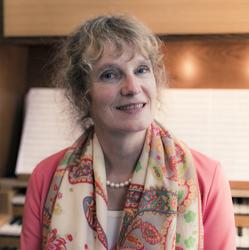
Margaretha Christina de Jong, organist and composer from Middelburg, Holland, has received a commission from the Marjorie Jolidon Fund of the Hartford AGO Chapter to compose a new work for organ and cello or viola.
The piece, a series of 6 Charakterstücke, will be premiered by organist Christa Rakich and cellist Kathy Schiano at the First Congregational Church in Somers, CT on September 11. For information: margreethdejong.nl.

